From Bauhaus to a School of Schools?
Jan Boelen on the Bauhaus as the model for a future “school of schools”
Almost one hundred years after its founding, the Bauhaus, which began to revolutionize learning, has itself solidified into the sacred cow of design education. In order to expose the magical moment of disruption, curator Jan Boelen and his team were transforming the Istanbul Design Biennale 2018 into a huge field of experimentation for a necessarily restless and puzzled educational offensive.
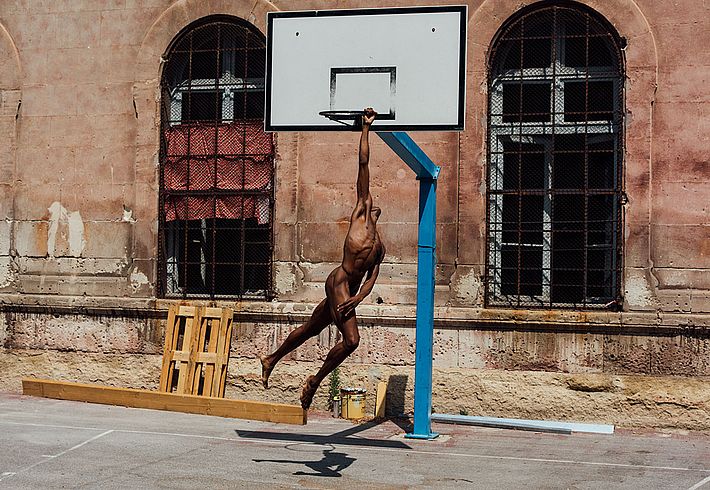
About the authors
Jan Boelen (Brussels) is Artistic Director of Z33 House for Contemporary Art; and Head of the Master Department Social Design at Design Academy Eindhoven. In 2018, he was curator of the fourth Istanbul Design Biennial. Nadine Botha (Rotterdam) uses exhibitions, journalism and media to demonstrate how socio-political cultural systems design our realities. She worked with Vanabbe Museum and won the Design Academy Eindhoven Gijs Bakker Award for her Master’s project. Vera Sacchetti (Basel) is a design critic, co-curator of TEOK Basel and co-founder of editorial consultancy Superscript. She serves in a variety of roles, most recently as associate curator of the fourth Istanbul Design Biennial.
[Translate to English:] Text
Ninety-nine years after the Bauhaus [in 2018, editor's note], the epistemological proposition advanced by the experimental school at the start of the 20th century continues to inspire the design discipline in a number of ways. Not only do most design education programs and curricula continue to emulate the German school in a number of ways, from their fascination with the model of the workshop to the structure of different courses, but these traits have been effectively codified by years of repetition in institutions that tend to be large and buraucratic in nature. The results, naturally, have become arguably less inspired than 99 years ago, adapted to industrial and economical realities that guide themselves by principles very different from those that guided Gropius, his students and fellow teachers.
Ninety-nine years after the Bauhaus, the world is a different place, design a very different discipline, but design education has mostly remained the same. And yet, starting with the Bauhaus, alternative design education initiatives have consistently provided a brave space for experimentation and new knowledge. One must only think of Black Mountain College and its experimental and interdisciplinary approach, which resonates to this day. Similarly, from 1973 to 1975, the Global Tools system of workshops sought to return to an archaic form of wisdom, embracing nomadism and leaving the city itself behind; and the Sigma Group, from 1969 to 1980, used an artistic and pedagogic approach to tackle mathematics, cybernetics, bionics, psychology, and architecture in the arts.
These initiatives have not only helped design evolve, question itself and push its own disciplinary boundaries, but they have also pushed the boundaries of education and learning in general. Not only concerned with design, many of these experiments have also tested alternative ways of living, working, and connecting with each other and ourselves. In so doing, these initiatives created spaces for reflection and action, for experimentation and generation of new knowledge, where new manifestations, meanings, and implications of design could emerge. Where can one find similar spaces today? Can they be created? This was what we set out to test in the process of making the fourth Istanbul Design Biennial – “A School of Schools”.
Doubting a biennial, doubting design
Why do another design biennial? What is the urgency when in the world today there are more design festivals, design months, design weeks, design parties, and design events than ever before? These questions directed our initial research trips in preparing for the fourth Istanbul Design Biennial. As we visited Turkish organizations, universities, cultural institutions, and factories, and spoke to designers, students, professors, and experts living and working in Turkey, the question was quickly flipped back at us: never mind another biennial, why do design? What is it for? What is design? A prescient question for a creative discipline that, not even two centuries since inception, seems more slippery than ever to define.
The slipperiness of design begs the question: what are we teaching our design students? Not much, judging by the hundreds of generic design portfolios submitted annually to master’s programs: the same realities, rendered in the same software programs, by students from China to the United States, all tasked with designing solutions for the design solutions-turned-prob- lems from the previous generation. Design schools are still emulating the Bauhaus workshop-will-ab- sorb-the-school education model that advanced an apolitical universal aesthetic prioritising manual craftsmanship above all. What was once an avant-garde design education movement has over the course of 99 years become a global institution.
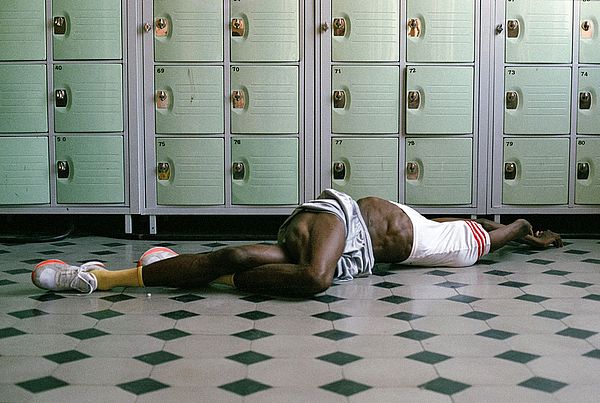
[Translate to English:] Text
Walter Gropius might well be proud to see that his 1919 manifesto did reach his universal aspirations, but the key difference between the Bauhaus of then and the institutionalized Bauhaus-style education of today is that the original was a utopian experiment. From Black Mountain College’s experiments in art to Victor Papanek’s ‘real world’-problems-focused teaching; from Global Tools’ counter-school system of workshops to the Sigma Group’s 1970 point-line-sur- face-volume-elements methodology, design history is peppered with examples of experimental pedagogies that sought not only to test and stretch the definition and application of design but also to propose utopian visions of the nature of universal education and the conditions of society as a whole. Nevertheless, experiments stop being experiments once their outcome becomes predictable; institutions become counterproductive once their own survival becomes more important than the utopia they intend to advance.
In universal education, too, that threshold has long been transgressed by a system predicated on producing efficient and obedient workers, and issuing qualifications as access- and status-control. Neoliberalism has perverted this self-fulfilling institution to the point where students, given the illusion of agency by being framed as customers, are often staking a lifetime of projected earnings in debt simply to afford the education that qualifies them for a lifetime of drudgery. Yet increasingly, the reality is that less and less of the jobs that children are currently schooling for will still exist by the time they graduate, and that the gap between increased qualifications and projected income has been widening dramatically since the 1980s advent of computers. Parents and young adults banking on the previously failsafe investment of expensive education have no guarantee of returns.
It is a visceral manifestation of the banking metaphor that students are treated like empty vessels in which teachers deposit knowledge like coins in a bank, advanced by Paulo Freire. Memorizing vast amounts of content, and repeatedly being told by teachers that we will never understand everything, has created passive minds. “In the last analysis, it is the people themselves who are filed away through the lack of creativity, transformation, and knowledge in this (at best) misguided system,” the Brazilian philosopher wrote in the seminal “Pedagogy of the Oppressed”, this year celebrating its 50th anniversary. “Knowledge emerges only through invention and re-invention, through the restless, impatient, continuing, hopeful inquiry, human beings pursue in the world, with the world, and with each other.” The world needs the latter more than ever.
The present is at best a peculiar and at worst a terrifying transition period where old forces keep trying to reinvent the same traditional system of material abundance and information scarcity. This despite the undeniable evidence of planetary strain as material resources are plundered, and our every human system from domestic routine to high speed trading, being run by the insatiable leviathan of information that is the internet. With more information than ever and more schooling than ever, the world and its leaders have completely run out of ideas to deal with the complexities that this inversion of logic introduces. New proposals are needed for how to organise society, how to structure our governments, how to live with not against the planet, how to sift fact from fiction, how to relate to each other, and frankly, how to simply survive. Sitting passively in class or on sofas at home expecting teachers and leaders produced by the same debilitating education system to produce the answers is simply no longer an option.
An educational web
“Halletmek practices appear in the street in many states: fixing broken objects, modifying objects or spaces, merging things together, upcycling found/old objects and making interventions in the urban space,” explains Nur Horsanalı, a recent graduate from the Istanbul Bilgi University, who set out to document the makeshift ways that people in Istanbul intervene in designed objects “in order to domesticate the public space, to provide needs that occur in everyday life, and most interestingly, to overcome the municipality rules and prohibitions.” Halletmek is a Turkish word for which there is no exact English translation, but it broadly translates as “to sort out”, encapsulating an everyday hands-on attitude of refiguring through rearranging, resolving, adjusting, getting things done, resolving, or reconsidering. Horsanalı’s project is not only an inventory of hacked designs and a taxonomy of halletmek strategies, but a web of learning by doing and learning by designing, stretching from the street to the ivory tower. The first project we selected for “A School of Schools”, its principles have become leitfmotifs: Halletmek inverts the relationship between ignorance and expertise, emphazises everyone’s agency on their surroundings, and shows the web of knowledge exchange that spans a city.
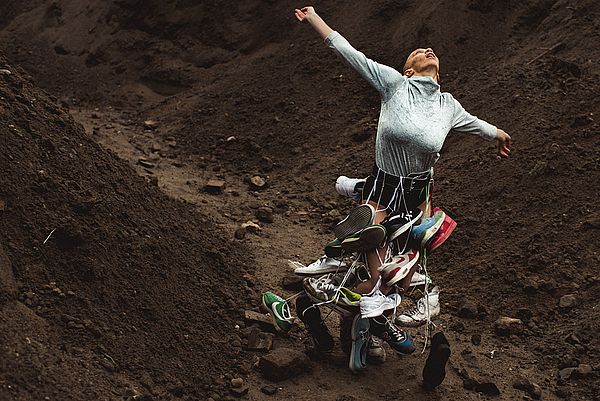
[Translate to English:] Text
Similarly, “A School of Schools” seeks to unflatten the pluriverse of potentialities in design and learning, not only with multiple perspectives but also with multiple propositions beyond design as solution and school as institution. The etymology of both “school” in English and “okul” in Turkish can be traced back to the Greek skholē that meant “leisure, philosophy, lecture place”, and by titling the design biennial “A School of Schools” we sought to go beyond the school-as-institution connotation that emerged in the 1500s. Movements of thinkers, collaborators and fish; slangs for indoctrination, revisioning history on social media, being colonially groomed in Africa, and clubs of gamblers in Britain; and physical and digital sites of conversation, inspiration, innovation, and evolution ... are just some of the uses of the word “school”. Everything and everywhere is school, and every single interaction we have with a design is pedagogical. The machine has been teaching us how to behave like computers since the calculator, our objects have shaped our rituals since we made the first primordial tool, our teacher and thinkers have quantified and ranked every element of existence since the first currency. What emerges is an educational web that, wrote Croatian-Austrian philosopher Ivan Illich in his classic 1970 pedagogical critique, “Deschooling Society”, can “heighten the opportunity for each one to transform each moment of his living into one of learning, sharing, and caring”.
Webs are not homogenous, consolidated, or entirely logical, and the same applies to our curatorial strategy, and even this curatorial essay. It is not our intention to offer a scholarly grand narrative, or posit another institution to replace design education. “A School of Schools” is a bricolage of projects, impressions, ideas, and opinions that have conflicted and corroborated to actively, subconsciously, and retroactively shape an educational web that is presented as a launchpad for doubt, dialogue, and conversions.
An expanded field of design
“The biggest threat to the limits of what we can imagine is our assumptions. Those opinions, biases, and expectations of which we are unaware or do not question. These could have been shaped by our experiences, beliefs, culture, family, and ultimately, society at large,” writes Turkish designer Ebru Kurbak in the catalogue of “Stitching Worlds”. A four-year long research project, “Stitching Worlds” questions our understanding of history as a linear progression by resurfacing the role of textiles in the development of contemporary electronics, and how gendered worldviews have influenced the technological accelerationism of today. Although the knitted, embroidered, sewn, and crocheted devices produced are functional and exquisitely crafted, the works are not intended as solutions or alternative technologies, but to ignite doubt in the inevitability of our material environment and the historical narratives that we have been schooled into believing.
While design education might not have evolved much since the Bauhaus, design itself certainly has gone beyond functional pragmatism and save-the-world solutionism. Global design history reveals that design is much older than the industrial turn that systematized it into a discipline in the West. The intention, process, and execution of improving the material quality of our existence with domestic conveniences – from stool, headrest, and vessel to chair, pillow, and dining utensils – not to mention vernacular architecture, organic genetic modification of crops, and body modification, are evidence of our irrepressible urge to create and evolve our environment alongside our selves. With the codification of the discipline of design as a hinge between aesthetics and technology in the late 18th century, a scholarly inquiry into the nature, history, and potential of design also began. Only relatively recently have we seen this academic reflection of design not only becoming a field in itself, separate from art and architecture history, but also studied in the same design schools defined by the Bauhaus’s workshop education model.
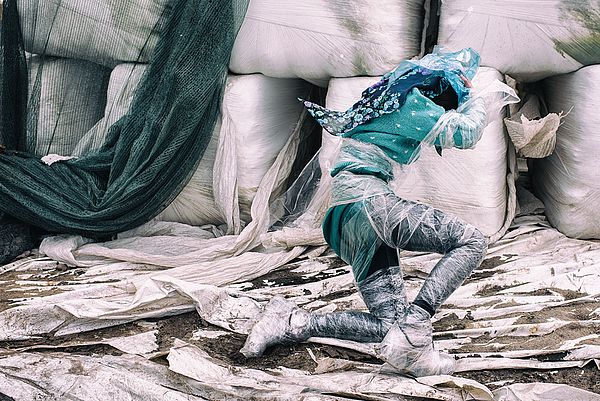
Knowledge emerges only through the restless, impatient, continuing, hopeful inquiry
Jan Boelen, Nadine Botha, Vera Sacchetti
[Translate to English:] Text
Today, we see the emergence of at least three more self-aware design directions: critical, relational and speculative design. Critical design is acutely aware of and resists its instrumentalization in neo-colonial development and capitalist consumption, highlighting the limitations and underbelly of the discipline in the historic present. ‘Speculative’ design casts its eyes to the future to postulate on where the world might or might not be headed given current social, technological, and scientific trajectories. It is also often critical and revisionist, but additionally asks us to think outside the confines of history and intellectual assumptions to open up new possibilities, however feasible, as lenses through which to understand our decisions and their outcomes differently. ‘Relational’ design encompasses the social and participatory design, and systems thinking that started emerging in the 1970s. Relational design is not just about the object of design but the interactions between humans, objects, buildings, cities, countries, and networks.
“No one believes anymore that today’s learning solves tomorrow’s ‘problems’; it is almost certain rather that it causes them,” wrote German critical theorist Peter Sloterdijk back in 1983. Fatalist as it may sound, it is a wake-up call: we can no longer rely on the power of positive thinking or trying the same solutions over and over again in the hope of a different out-come. Design can no longer ignore the fact that it is a huge contributor to and benefactor of our times of constant crisis. These three new directions propose that maybe design doesn’t know the answer and that we are all implicated in the global system which repeats this cycle. They call on us to confront our assumptions and think through the implications ourselves, leaving the responsibility with all of us, not adding another coin or solution to a passive mind or consumer.
A space of exception
“Measuring tools are mythological objects which reflect our civilization’s technological evolution. Units, tools, and standards used to be specific to the cultural background they emerged from,” Juliette Pepin told us after her research visit to Istanbul. “As a foreigner it was striking for me to see the paradox between Istanbul’s great global diversity of architecture, languages and history, and the large amount of measuring tools found in its streets, museums, and bazaar. As if they were waiting to be used in order to standardize the unstandardizable diversity of the city.” Building on her previous MOTS project that introduces children to the plurality of language, for “A School of Schools”, the French designer has developed a workshop program to introduce school students to the design potential of disruption and transmission in learning and creativity.
The desire to quantify the impossible is a hallmark of the universal education system that assesses students on a predetermined hierarchy of capabilities and skill sets. Learning is not the only function of education. In its utopian manifestation, education is also the time and space for studying without predetermined out-come. Studying might be characterized by the irrepressible urge to following a butterfly without knowing where it may lead or whether the ends might at all qualify one to being more employable, nor develop a useful or consumable finding. Without the potentiality of studying, we can only reproduce and repeat what we already have and know. It is this type of attitude we have seen not only in designers such as Pepin and others who have visited Istanbul on research trips to develop new projects but also in the designers who have developed projects in their own context. It is a characteristic of the expanded field of design.
In neoliberal education and design for commercial ends, it might seem that moments for such study have become harder and harder to find. “Studying is a kind of educational state of exception wherein the studier is abandoned, exposed to sovereign violence without the protection of the law,” notes American philosopher Tyson E Lewis while evoking Italian philosopher Giorgio Agamben’s notion of the state of exception in the context of education. Schools, cultural institutions, and biennials are all spaces of exception in their potential to offer states of temporary suspension of normal functioning, in which utopian ideals might be achieved. By installing a physical manifestation of “A School of Schools” in Istanbul, we sought to explode the schoolhouse’s scenography of exception from building to city. The streets become the corridors of happenstance learning, connecting cultural institutions that each function as spaces for study around multidisciplinary complexities rather than siloed subjects.
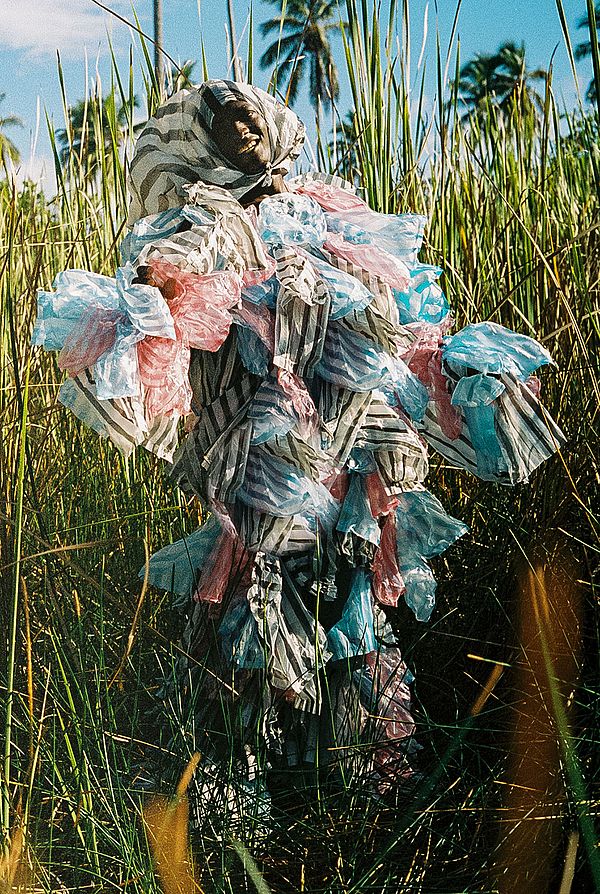
[Translate to English:] Text
Biennials and cultural events have become spaces of exception that allow international travel and knowledge exchange despite restrictive economics and authorities. The non-commercial and durational nature of biennials can be seen as constraints and critiques of these types of events, but for “A School of Schools” these conditions provide a space of exception in which to test design and education strategies without the pressure to produce quantified outputs and replicable models. Using the design biennial as platform offers the opportunity to delink from the factory-inspired school timetable of bells and preallocated subjects for learning, and the scope for designers from Turkey and beyond to delve into a study project. While some projects are discrete interventions during the exhibition period, the biennial’s educational web of conversions started months before the exhibition opening and, we hope, will continue for years to come. You will not find a single prognosis, template, or solution for the future of design education in “A School of Schools”. We’re not here to optimise the system without questioning the mechanics of the system. Rather than offering solutions to predetermined questions, “A School of Schools” intends to inspire doubt – not knowing is the first step in learning, and studying for unknown outcomes initiates the potential for newness. We would like to start a discussion on design, education, and design education. We would like it to generate more questions than answers. This places the responsibility on each of us to become agents of our own education.
Empowered doubt
“I suppose any object contains the universe if we get to it, but I quite like the fact the ‘object’ in question is a deadly fish that some find delicious to eat (I like it).” This is how Maki Suzuki from åbäke explained to us his fascination with the poisonous fish that is eaten as a delicacy in Japan. The French-Japanese designer heard that in recent years the fugu has made it into Turkish waters. Starting with this seemingly anecdotal detail of global warming, for “A School of Schools” he set out to study the fish’s unlikely migration, deciding that “a suitcase and a domino effect of meeting with experts could provide a nomadic schooling system. Each encounter would see the creation of an object and a path, hopefully channelled by the discussion itself rather than a predecided goal”.
Doubt is like the fugu fish: when feared or eaten without proper preparation doubt can be a poison that kills curiosity and compassion. The vulnerability evoked by not knowing has made us afraid and hateful of unknown people, conflicting opinions, and inexplicable technologies. Finding comfort in the familiarity of peers and the echo chamber of social media, passive consumers become sitting ducks for the contemporary political infrastructure of fear. If, on the other hand, we confront the doubt head-on by naming it, by recognizing that the fugu is poisonous, we can open a dialogue of questions and curiosity that can lead us along a rewarding learning and studying journey. Self-initiating this process of education is urgent. The machines are not coming for our jobs; they are already here, and entertainment and social media seem hell-bent on making us passive consumers that accept this particular trajectory of technological acceleration in which humans become obsolete. We have to reclaim our agency, become empowered doubters of what and why something is presented to us as truth, and proactively seek out learning and studying if we are to survive.
Headline
Doubt is not a soft or indecisive curatorial strategy. It insists that we start taking radical alternatives to the passifying and dumbing down of universal education very seriously. It insists that this starts right now, with this biennial, by leaving each educational conversion up to the individual to doubt, renegotiate and relearn. It insists that we need to become comfortable with doubt and not knowing, not only as a first step to learning but also as a neutral step to accepting other people and ideas that might not be the same as ours. It insists that educational leaders and cultural institutions use their spaces of exception to facilitate the implicitly political act of true learning. “A School of Schools” insists that, as Plutarch asserted, “the mind is not a vessel to be filled but a fire to be kindled.
This article was originally published in the third issue of the “bauhaus now” magazine.